Sorry, But Lasers Won’t Get You To Mars In Three Days
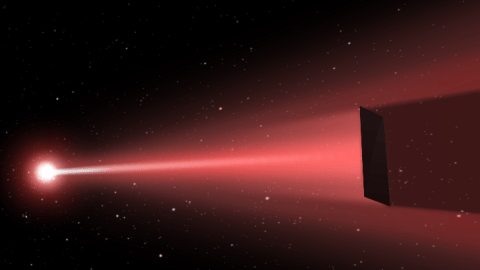
It’s a wonderful potential technology for going interstellar. But in your lifetime? Don’t hold your breath.
“Greatness is not in where we stand, but in what direction we are moving. We must sail sometimes with the wind, and sometimes against it — but sail we must. And not drift, nor lie at anchor.” –Oliver Wendell Holmes
Anytime a powerful new technology is developed, it’s worth rethinking our conventional ways of performing difficult tasks. When it comes to traveling to outer space and exploring the Universe beyond Earth, any new advances in energy production, storage or transmission is worth taking very, very seriously. But space is very, very big, and the distances from Earth to other planets — not to mention other stars — is literally astronomical. As of 2016, we’re still using chemical-based rocket fuel to launch and maneuver our spacecrafts, the same technology we were using in the 1950s and 1960s, when spaceflight first began. But recently, a team of scientists and engineers led by Philip Lubin has announced that they believe it’s possible to use laser propulsion to not only turn missions to Mars into a meagre three day jaunt, but to aim for the stars at faster speeds than any spacecraft has ever achieved.
Promises like this seem to come up periodically, as concepts such as fusion-powered rockets, antimatter engines and even so-called impossible engines hope to supersede today’s best technologies for accelerating large masses to high speeds. The problem with these promises is that in each case, it simply isn’t practical:
- Nuclear fusion is, thus far, not a controllable, sustainable reaction, and so cannot emit large amounts of power for long periods of time.
- Antimatter is not only expensive to produce, it can only be produced in minute quantities. If you were to sum up the entire amount of antimatter ever produced by humans on Earth, it would weigh less than one microgram, which would release only about the energy of a small box of dynamite if you converted it into pure energy via Einstein’s E = mc^2.
- And hypothetical engine designs like the EM Drive don’t give reproducible, robust results, nor do they ever give large amounts of thrust or power, even under the most generous testing conditions.
But this latest one is different, as the core technology for laser-based propulsion actually exists today.
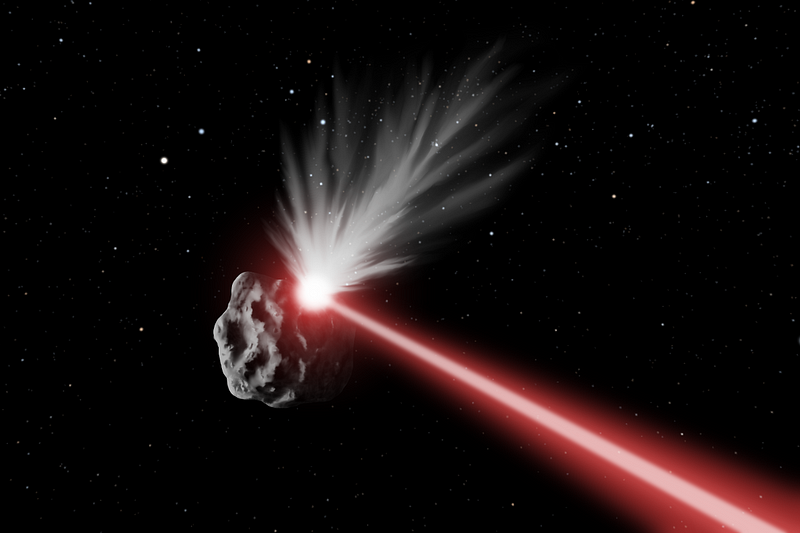
With a view towards asteroid deflection, advances in laser power have been tremendous over the past 15 years. Projects by a number of scientists at various agencies, including DARPA, have succeeded in enhancing laser power in a novel way: not by increasing the power of each laser, but by making laser arrays arbitrarily scalable. In other words, you can now build a large array of lasers that fire in phase and accurately at an appropriate target, transmitting not just the kiloWatts of power associated with a single laser, but an arbitrarily large amount of power that’s limited only by the scale of your laser array. Here’s a “simple” test of a 19 element laser array firing at a basalt target.
The idea behind a laser-based propulsion system is relatively simple in principle, and requires just a few steps:
- Create an array of in-phase lasers in orbit around Earth, set up so that they can be pointed accurately at whatever target is chosen. Ideally, this array would reach gigaWatt power levels.
- Create a “target” spacecraft that initially starts in low-Earth orbit, with a large sail-like surface on it, capable of being targeted by the laser array.
- Hit the target spacecraft consistently with the sufficiently-powered laser, accelerate it to whatever speeds you can with the appropriate trajectory, and watch it go!
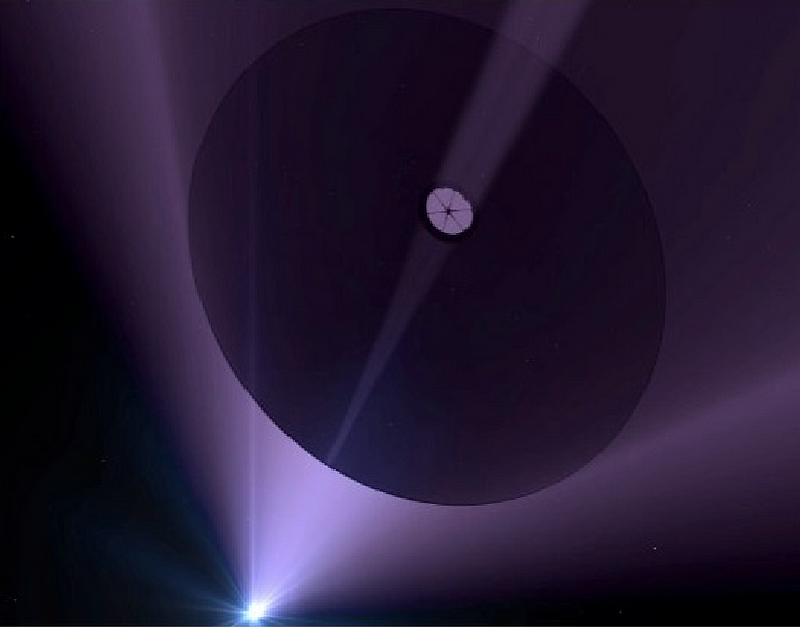
There are a great many good reasons to be excited about this! The laser technology already exists, and is actually getting better as time goes on. It’s easy to begin small: since the array is scalable, a small investment can be used to accelerate very small (sub-gram) masses to high speeds to start, as a proof-of-concept. The sail can be quite small — only about a square meter — and still be very effective. And the reflectivity or robustness of a laser sail isn’t problematic the way it is for a solar sail, since the frequency of a laser is very narrow, and thus it’s relatively easy to reflect 99.99% of the light or more, with only a very small amount of absorption. Simulations indicate that even a modest laser array (272 kiloWatts in the video below) can accelerate a one-gram test mass with the appropriate sail into interplanetary space.
There are, however, some incredible reasons for skepticism. The physics isn’t impossible, mind you, but it’s a herculean engineering task. Here are some important barriers we have no idea how to presently overcome:
- How to successfully collimate a laser over such long distances. For example, the mirrors that the Apollo astronauts installed on the Moon effectively reflect-and-return only one in 10¹⁷ photons back to their intended destination.
- How will an accelerated object be useful? Right now, any mass accelerated to appreciable speeds would be so small that it couldn’t transmit anything useful with any amount of power that would be detectable by those of us back on Earth.
- Could an object as low-mass and as thin as the proposed one-gram spacecraft probes actually stand up to the power of these lasers, or will they be rendered useless, even with their high (but imperfect) reflectivities?
- An object accelerated like this would not be steerable or capable of being decelerated once it arrived at its destination.
- A sail-like object, particularly a wafer-thin one, would need to somehow be stabilized against tiny gradients in forces, otherwise it would begin rotating and spinning, making it incapable of further acceleration.
- And finally, the magnitude of the laser array needed to accelerate any appreciably large mass would be incredibly large and expensive.
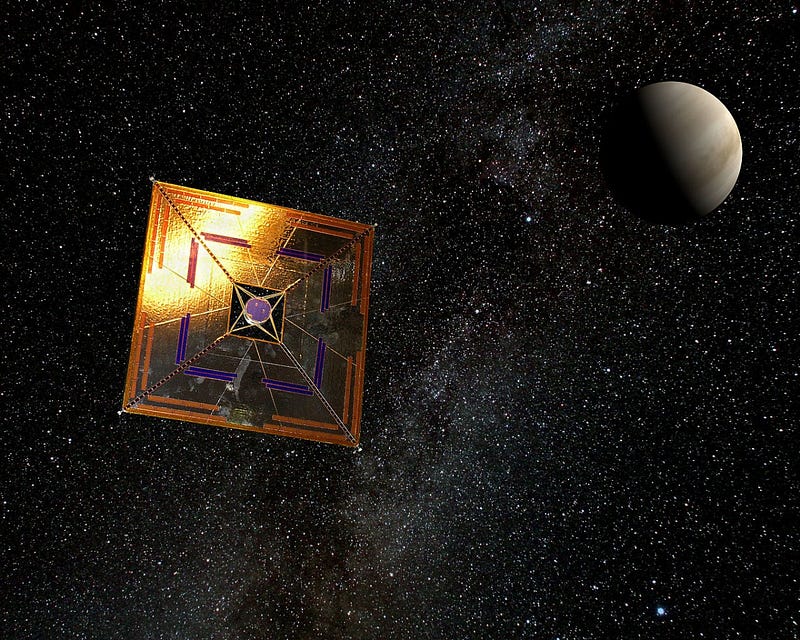
The laser sail concept might be great for getting tiny, tiny masses up to large speeds, but a full-scale model that achieves the desired gigaWatt power range requires a laser array that’s approximately 100 square kilometers in area, or about as large as Washington, D.C. A full scale array like this could propel a “wafersat,” or a thin, computerized chip about 10 centimeters in diameter with a mass of about a gram, to about 0.3% the speed of light in about ten minutes. (Increase the area to a square meter, as some hope, and you could reach about 26% the speed of light in that time!) It could propel a 100 kg payload (about half the mass of the Mars Opportunity rover) to the same speed with a much larger sail, or even a 10,000 kg payload — perhaps sufficient for sending humans on a voyage out of the Solar System — to speeds of 1,000 km/s, or about 100 times faster than the Apollo astronauts went on their journey to the Moon.

This initiative is known as DEEP-IN, where directed energy is used to accelerate probes to interstellar speeds, and you can read Philip Lubin’s white paper here. It’s certainly an exciting idea, and one where the possibilities are worth looking into. But don’t pack your bags for the nearest stars just yet, because the difficulties with implementing and scaling this type of system — and in particular, of the power, collimation, and usefulness of the lasers as they reflect off of a still-theoretical laser sail — may prove to be many decades or even centuries off, if they’re even feasible at all.
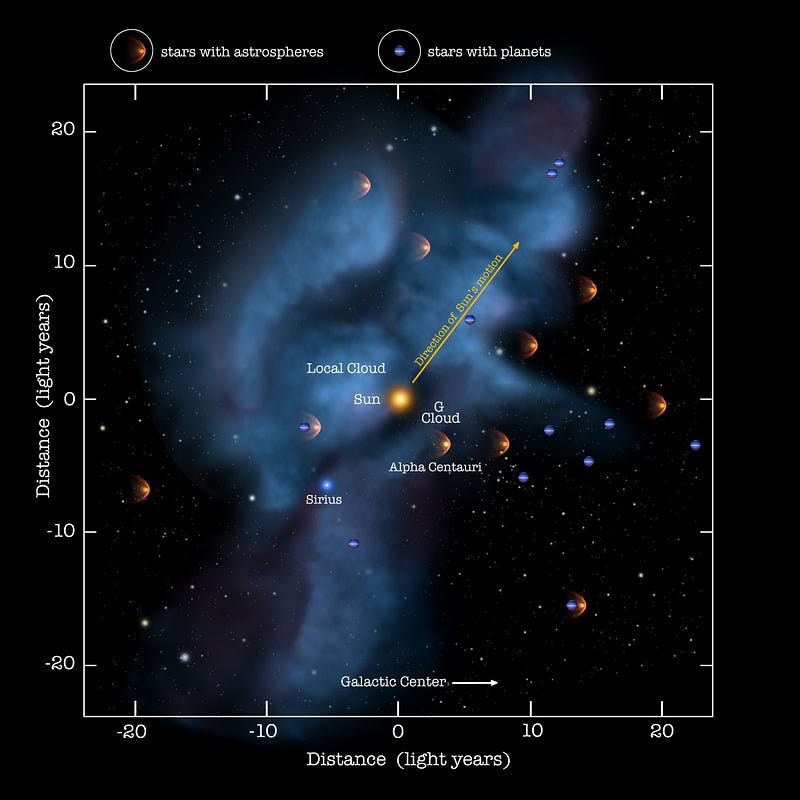
It’s worth investing in and trying out, for certain. Laser propulsion may yet be the future of spaceflight, and the technology that finally takes us to the stars. But it isn’t the present of spaceflight, and the obstacles to overcome are highly formidable. We should absolutely try this path and go for it, but it’s by no means a slam-dunk. The Universe beckons to us, and it’s an absolutely tantalizing possibility that we may be able to see a revolution in how we get there. But it’s also incredibly important to be realistic about the technology we have today, and the challenges we face to get to where we want to be. Laser propulsion may be humanity’s best bet given the technology we know exists today, but it’s a long way from sending us to the stars.
This post first appeared at Forbes. Leave your comments on our forum, check out our first book: Beyond The Galaxy, and support our Patreon campaign!





